.jpg?width=3072&name=blog%20header%20(2).jpg)
Once seeds have germinated and the crops begin to grow, it’s critical to get into the field and begin pulling roots. Root health is a leading indicator of an overall healthier crop that should produce a good yield.
For growers using Holganix Bio 800+ Agriculture, checking roots will allow you to begin quantifying the staggering differences between a control and a Holganix-treated crop. This is why Holganix encourages farmers to pull roots with its annual Bio 800+ Competition (check out some of the submissions here).
When pulling roots, what are the critical measurements and observations you should be making? In this blog, we discuss the six features you should look for when pulling corn and soybean roots. Click the link below to skip to that topic or continue reading to review all six features.
- Root Architecture: Corn and Soybeans
- Stem Diameter: Corn and Soybeans
- Root Nodules: Soybeans
- Flower and Pods: Soybeans
- Nodal Root Growth: Corn
- Ear Architecture: Corn
Root Architecture: Corn and Soybeans
Regardless of whether you are checking beans or corn, or any other crop, when pulling roots examine the root mass, length, and diameter, and especially note the presence of root hairs.
Typically, roots only explore 1% of available soil and most nutrients need close contact with roots to be taken up. Therefore, a more extensive root architecture means more soil is explored, leading to more nutrient uptake and improved fertilizer efficiency. Larger root mass also helps fight against environmental stressors like wind and heat, and healthier plants show better insect and pathogen resistance.
Another thing to note is how much dirt is covering the roots. In corn and some other species, this layer is called the rhizosheath. The rhizosheath is part of the rhizosphere. The rhizosphere simply is soil influenced by (and next to) plant roots. The rhizosphere is where the action is; microbial density is the highest, nutrients are being cycled and exchanged, water is captured and roots are protected. Plant health, fertilizer efficiency, and ultimately yields are strongly influenced by a healthy, microbially diverse rhizosphere, and an easy way to visualize this is by how much dirt sticks to the roots. And remember, when those roots die, microbes convert them into organic matter, which further builds the quality and value of your land.
When comparing soybeans and corn treated with Holganix Bio 800+ Agriculture to a control, the grower will nearly always see improved root architecture. Below are some examples from farmers that saw improved roots in Holganix Bio 800+ Agriculture-treated soybeans and corn from the 2022 planting season.
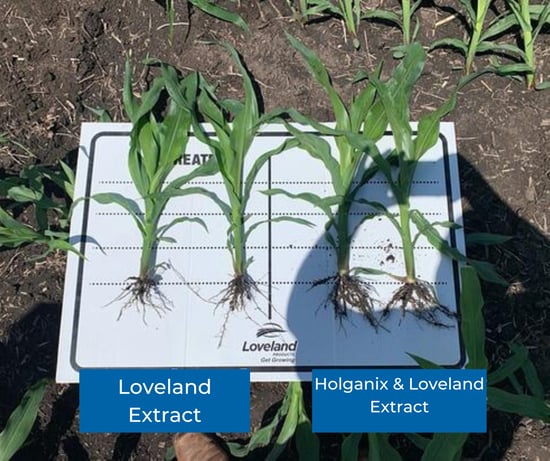
.jpg?width=550&name=Control%20(2).jpg)
.jpg?width=550&name=Control%20(3).jpg)
.jpg?width=550&name=Control%20(9).jpg)
Stem Diameter: Corn and Soybeans
A strong stem/stalk will allow the crop to better withstand bad weather, like the wind. A crop that falls over costs the grower in yield at harvest. According to a paper by Irrigation Science, “Stem diameter is also an important parameter in plant growth which can indicate the growth state and moisture content of the plant.” Measurements for stem diameter should be taken at the base of the plant.
Growers using Holganix Bio 800+ Agriculture on corn and soybeans will often see improved stem diameter as shown in the examples below.
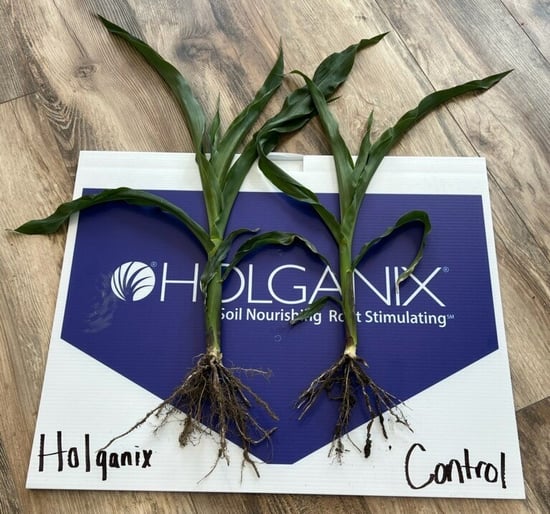
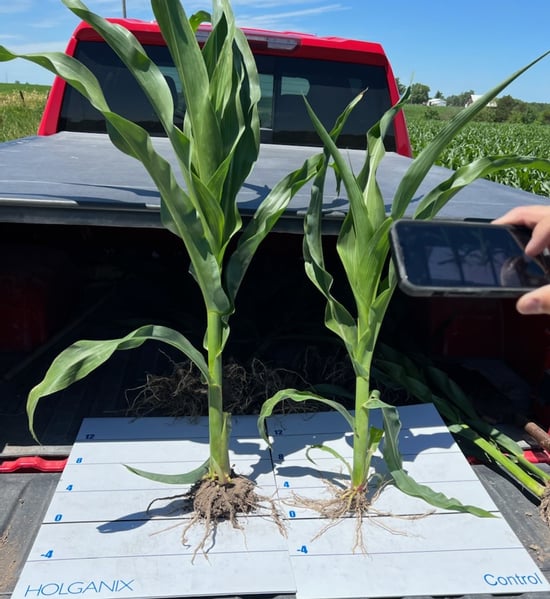
Root Nodules: Soybeans
It’s important to check the nodule growth on your soybeans. Nodules are round masses on roots that are formed by rhizobia bacteria. The nodule provides food for the rhizobacteria, while the rhizobacteria fix nitrogen from the air to contribute to the plant’s nitrogen needs. They also add net nitrogen to the soil for next year’s crop.
According to a publication by Oklahoma State University, “a properly nodulated soybean plant should contain between 25 and 100 nodules. These should not be confused with growths associated with nematodes, nodules are typically much larger.”
However, the presence of nodules is not enough. It is also important that these nodules are active. To check whether nodules are actively fixing nitrogen, cut open a nodule and check the color. If the inside of the nodule is pink, it’s active and healthy. If it’s pale grey, brown, or black, the nodules are not actively fixing nitrogen.
Growers using Holganix Bio 800+ Agriculture will often see increased nodule growth in soybeans, especially early in the season. In other words, these crops will have improved access to nitrogen over a control.
Below are some examples from farmers who saw improved nodulation in Holganix Bio 800+ Agriculture soybeans from the 2022 and 2021 planting seasons. In addition to more nodules, growers noticed that the tap root is longer and larger in diameter, which is a common response when using Bio 800+ in soybeans.
.jpg?width=550&name=Control%20(6).jpg)
.jpg?width=550&name=Control%20(4).jpg)
-1.jpg?width=550&name=6_22_22%20Bonar%20(2)-1.jpg)
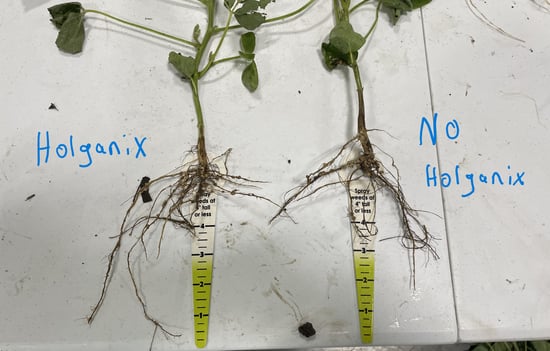
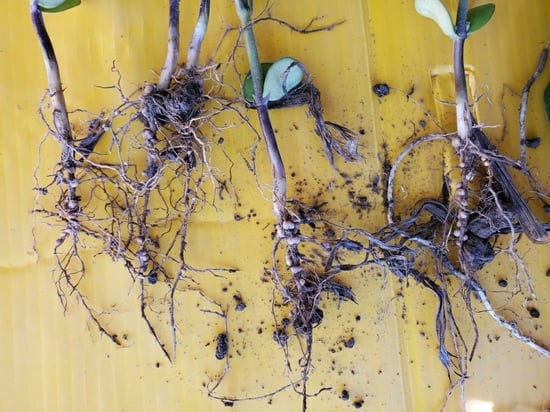
Flower and Pods: Soybeans
Keep an eye on when your crop begins to flower, when the pods set, the quantity of pods, and the seeds per pod. All these measurements allow you to predict whether you will have a good yield at harvest.
Growers using Holganix Bio 800+ Agriculture will often see increased and earlier flowering, increased quantity of pods, and swifter pod set, compared to a control. Review the examples below from the 2021 planting season.
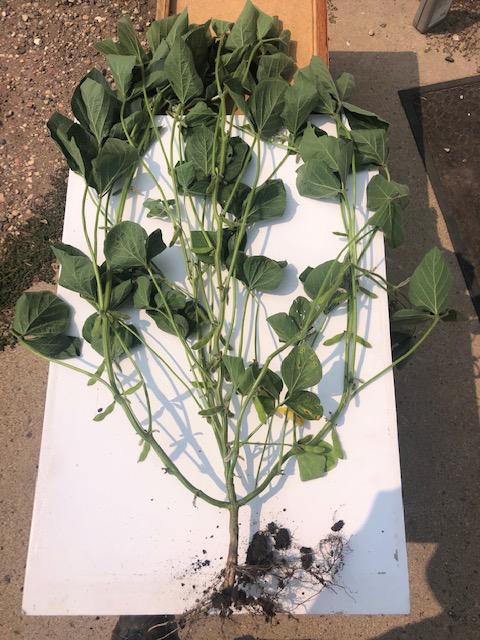
Nodal Root Growth: Corn
When your corn crop emerges, the next stage to note is the establishment of nodal root development. According to a paper published by Purdue University, “Successful stand establishment is largely dependent on the initial development of nodal roots... Stunting or restriction of the nodal roots during their initial development (e.g., from excessively dry soil, excessively wet soil, extremely cold soil, insect damage, herbicide damage, sidewall compaction, tillage compaction) can easily stunt the entire plant’s development.”
Growers using Holganix Bio 800+ Agriculture will often see improved nodal growth and potentially earlier nodal growth compared to a control. They’ll also see stronger brace roots. Stronger brace roots combined with the stronger stalk give the plant even more ability to stay upright through harvest. Below is an example from the 2022 planting season.
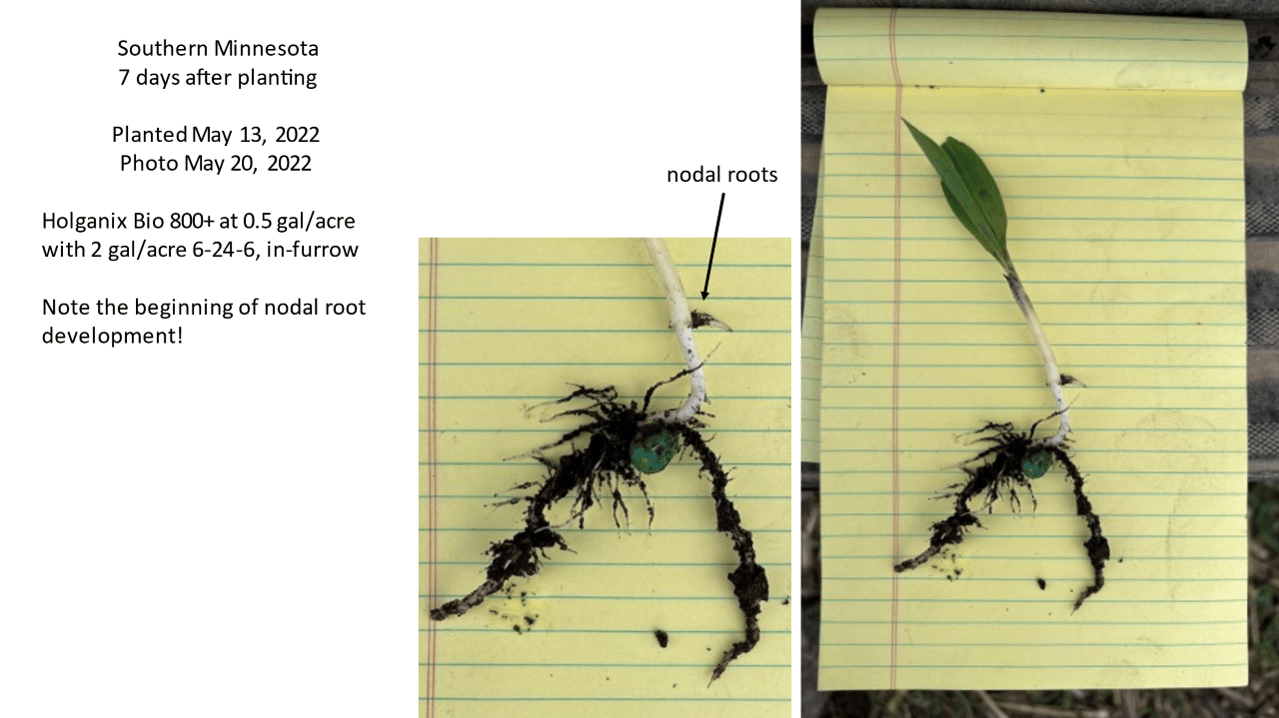
Ear Architecture: Corn
When reviewing roots, it’s also important to keep an eye on the ear architecture once the ear has formed. Specifically, note the ear size (diameter, length), the number of rows, the number of seeds per row, and how well the ear has filled to the tip. All of these measurements allow you to predict whether you will have a good yield at harvest.
Growers using Holganix Bio 800+ Agriculture will often see improved ear architecture, including better fill and ear size, compared to a control. Review the examples below from the 2021 planting season.
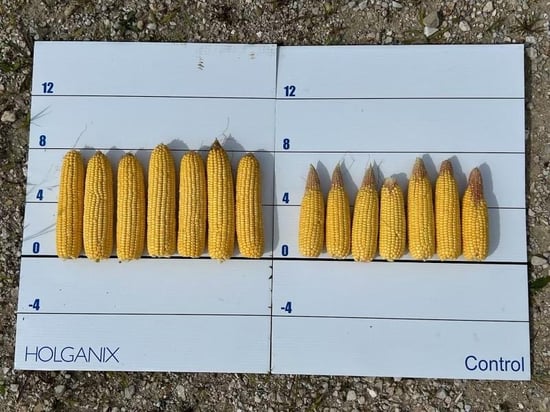
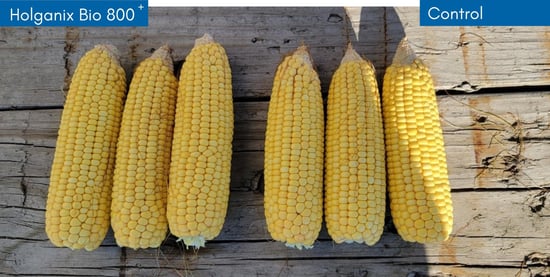
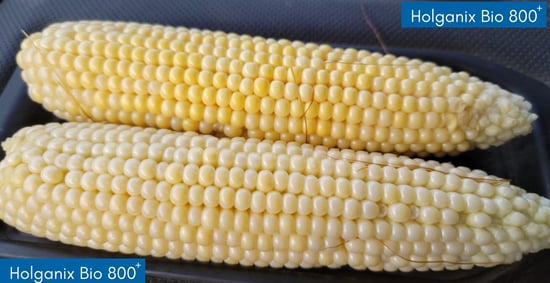
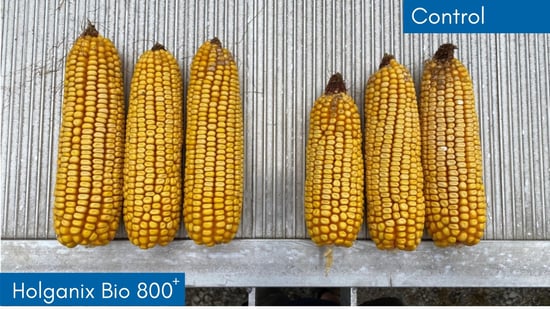
Holganix's Annual Bio 800+ Roots Competition
If you’re using Holganix Bio 800+ Agriculture this year, be sure to get in the field, pull roots, and snap pictures for our Annual Bio 800+ Competition. Running from June 1st through September 30th, our annual Bio 800+ competition is open to farmers, landscapers, lawn care companies, sports managers, golf course superintendents, nurseries, and greenhouses.
For each picture submitted, you win a Holganix-branded hat. If you submit a video, you win a Holganix-branded Carhartt cooler. Plus, each month we will award a Holganix-branded Ag Swag for "Best Picture" in each of the following categories:
- Corn
- Soybeans
- Specialty Plant Type
- Lawn
- Golf/Sports Turf
- Nurseries
Submit your photos via Twitter, Instagram, or Facebook using @Holganix. You can also submit your photos via email using rpatel@holganix.com or via text using 206-647-0696.
>>Be sure to check out some of the photos submitted earlier in the season in this blog
 |
June 15, 2023
|
1:30 PM
|
June 15, 2023
|
1:30 PM



.jpg?width=3072&name=blog%20header%20(2).jpg)

.jpg?width=550&name=Control%20(2).jpg)
.jpg?width=550&name=Control%20(3).jpg)
.jpg?width=550&name=Control%20(9).jpg)


.jpg?width=550&name=Untitled%20design%20(4).jpg)
.jpg?width=550&name=Untitled%20design%20(5).jpg)
.jpg?width=550&name=Control%20(8).jpg)
.jpg?width=550&name=Control%20(6).jpg)
.jpg?width=550&name=Control%20(4).jpg)
-1.jpg?width=550&name=6_22_22%20Bonar%20(2)-1.jpg)








.jpg)
-4.jpg)
-2.jpg)
-1.jpg)
-1.jpg)
-1.jpg)
.webp)
-1%20(1).webp)
-831535-2.webp)




-1.jpg)

